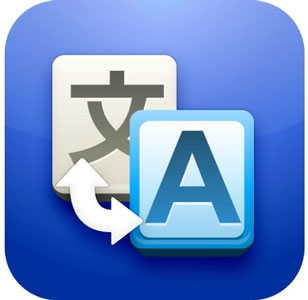Reaching a global audience is a reality for companies operating online, and the time when you could keep your non-US customers satisfied by just listing a phone number for the local sales rep is long gone. With 80% of global consumers researching products online1, it’s essential to communicate with these customers in their own languages. If you don’t, believe me, someone else will be ready to attract your customers.
Like everything on the internet, translating your website into other languages isn’t as straightforward as it seems at first. Depending on the size, scope, and features of your online presence, it can be quite complex. To prevent major issues and costs, I recommend you pay attention to these five lessons so your important messages don’t get “Lost in translation” during your website globalization project.
Lesson 1: Be prepared to deal with complications arising from legal, regulatory and cultural differences
When expanding into the global marketplace it is crucial to develop an understanding for each country’s requirements for displaying information and selling products. While some complications can be fairly easily overcome, others can be much more significant and problematic, and you might not even become aware of them until people within the target regions raise the red flag (hopefully before you have broken any laws). The point is that unless you are experienced in global business regulations, you should build ample cushion into your projects to deal with any such unforeseen circumstances that could arise when expanding into international markets.
Lesson 2: Structure of your content tree and media library from the get-go to accommodate for alternate language translations
To avoid the possibility that you’ll have to spend valuable time and money restructuring your CMS, make sure from the outset that it has been structured to accommodate for appropriate content relationships and foreign language media. Take advantage of the language versioning capabilities of your CMS, and avoid placing foreign language content and/or media items within the U.S. English version and using naming conventions to distinguish between languages.
Lesson 3: Consider language differences when estimating time-to-complete
One basic sequence of events when translating a piece of content from US English into a foreign language using the Sitecore CMS goes something like this: Create content in International English; Export the content items for translation in international English XMLs files and transmit these a translation service; Receive, import and verify the foreign language XML files; Allow pre-publishing access to regional marketing teams, subject matter experts and/or contractors for review, obtain feedback and either generate and import updated XML files or modify the foreign language content directly within the CMS. In many cases, for European languages like Spanish, French and German, this process goes fairly smoothly and the completed pages will largely mirror their US English counterparts.
You should expect more significant localization challenges/requirements with languages like Japanese, Chinese, Korean and Russian that use non-alpha characters. In these cases, the last phase (regional consultant review) can take much longer and may require much more significant localization and customization. In addition, you are more likely to run into issues with the way different browsers handle and lay out alternate character sets which may require further language based CSS customization. Best practice it to double whatever the timeline you have used for a European language translation effort for such languages.
Lesson 4: Have a fallback language plan and build in a manual override
Most major site translations do not need to address every piece of content in the CMS. Navigation and high-level pages are generally speaking afforded a much higher translation priority. Lower level content may or may not be translated depending on: the importance/size of the foreign audience; the importance of the content overall; and the frequency of download/level of specialization of the content.
In cases where no translated content exists, depending on your CMS, it may be possible to specify a “fallback” language for certain content, whereby in the event you do not wish to translate a particular item, but you still want it to exist within a particular language version of the site, the site will display the fallback language content. When using the fallback language approach, keep in mind that there will be times where you need to override the fallback behavior, such as when you have a news item present in your English content queue that you don’t want to display on foreign sites. Best practice is to ensure you build in a mechanism that allows you to specify which content should be exempt from typical fallback behavior.
Lesson 5: Consider the implications of mobile
Statistics show that, even as US consumers are adopting mobile devices as a way of accessing the web, many foreign countries are seeing mobile as a primary vehicle to accessing online content. According to surveys by Forrester2 (June 2011), the percentage of people regularly accessing the mobile Web in Japan and urban China is more than double the U.S. As you’re structuring your content management system to manage translated versions of your desktop pages, make sure you build in any special considerations that need to be taken into account for handling the display of translated copy on mobile devices.
What are some of the roadblocks you’ve come up against when launching your foreign-language version? Share your own advice and horror stories!
Our new microsite is packed full of expert thought leadership videos on how companies can leverage Social, Mobile, Analytics, and Cloud (The SMAC Stack) technologies to drive customer engagement, innovation, and business productivity.

